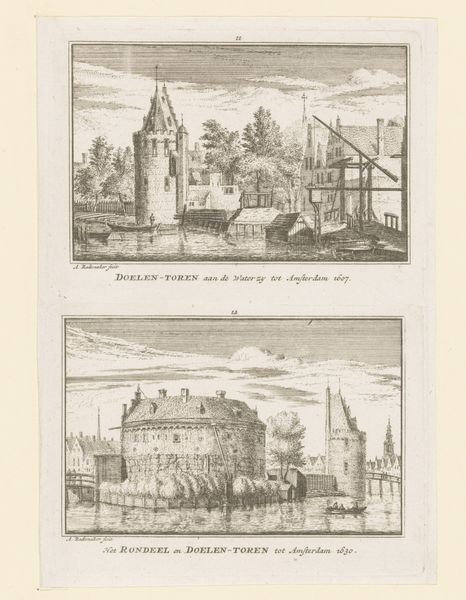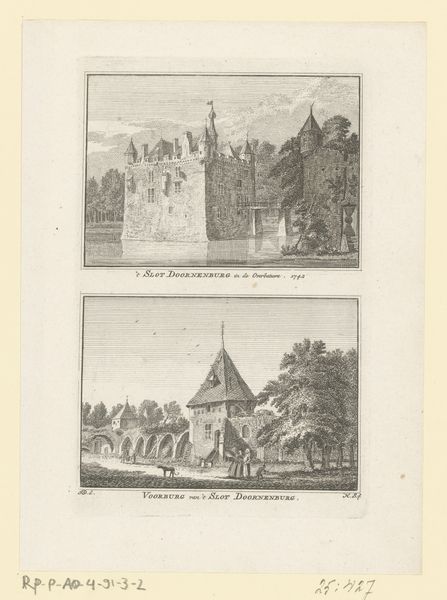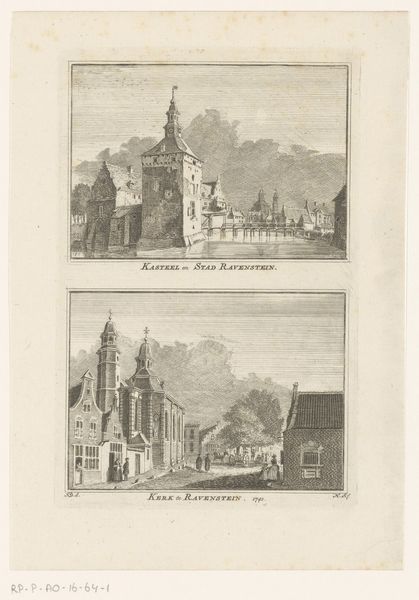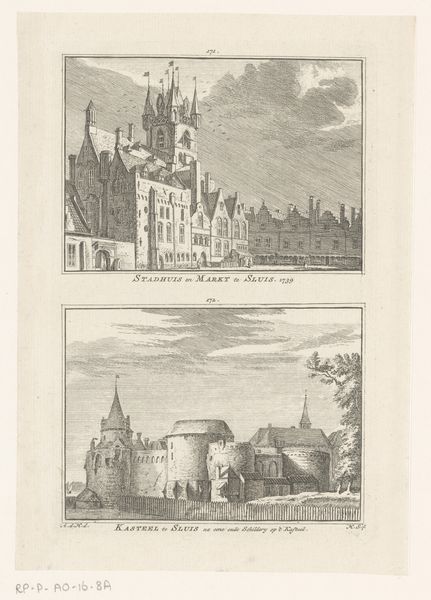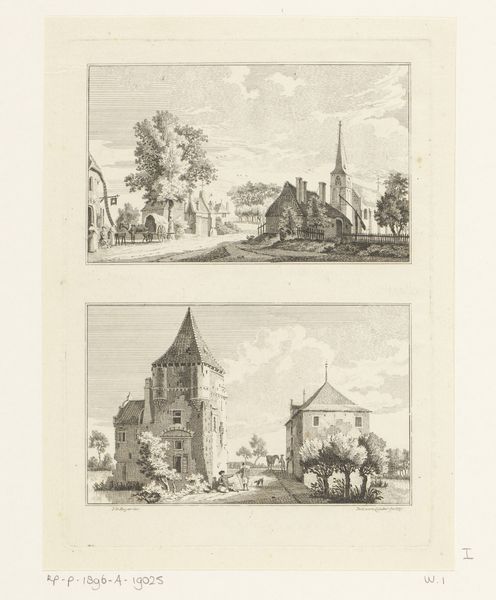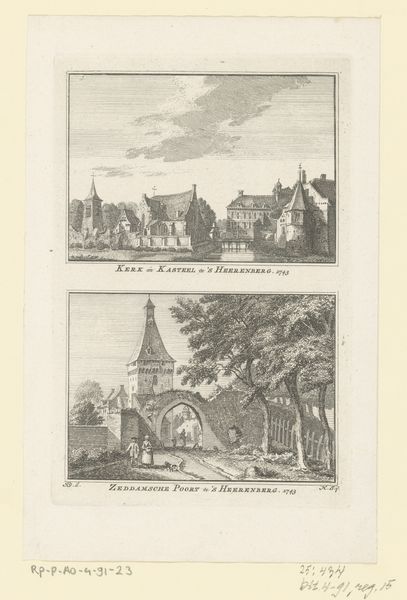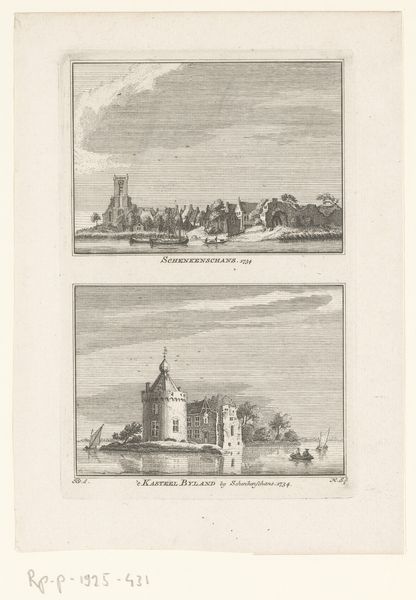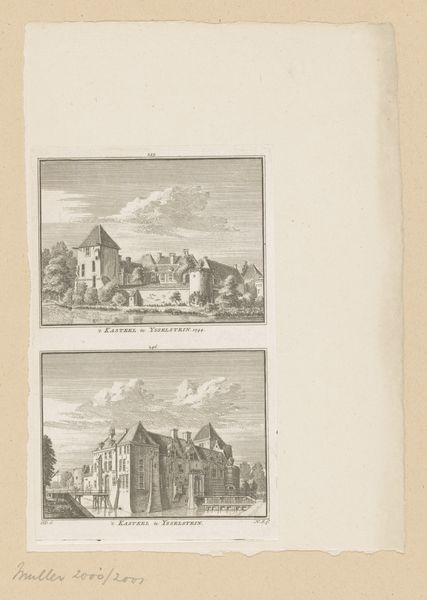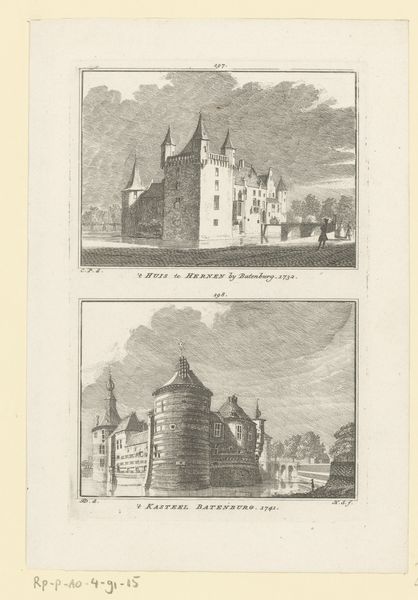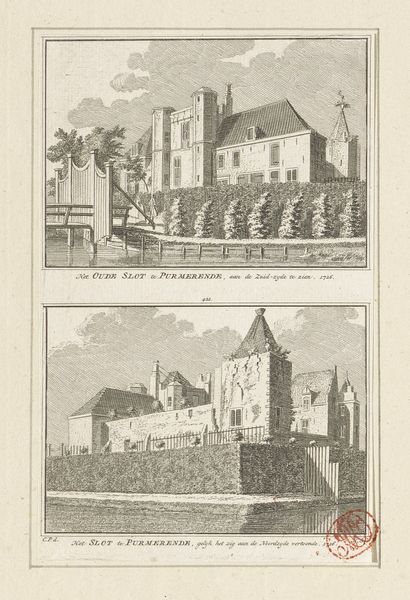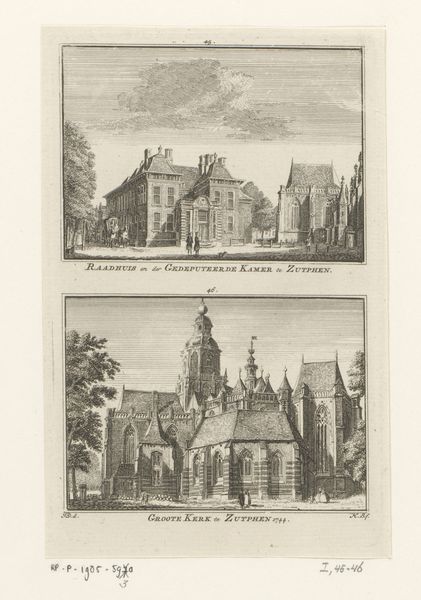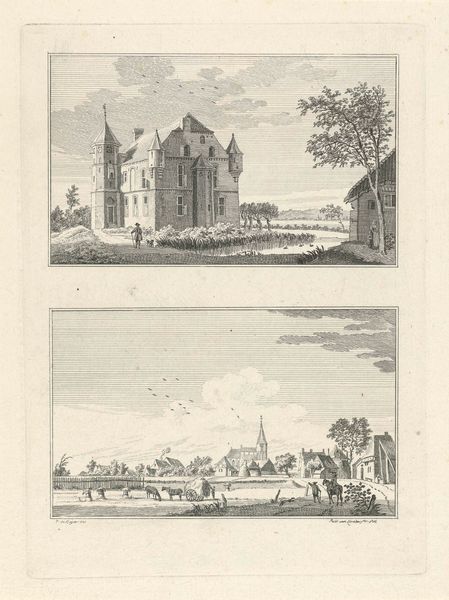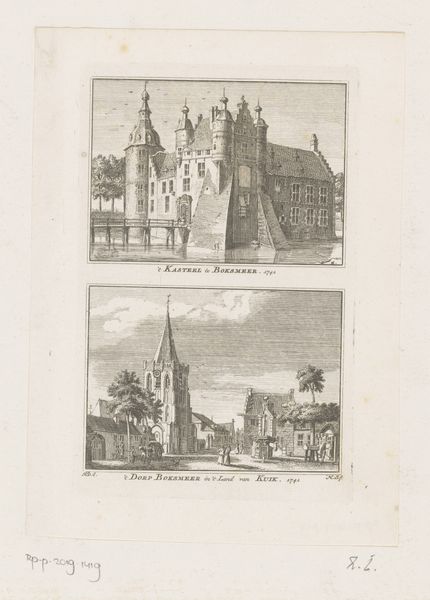
drawing, print, etching, ink, engraving, architecture
#
drawing
#
baroque
# print
#
etching
#
landscape
#
ink
#
cityscape
#
engraving
#
architecture
Dimensions: height 81 mm, width 115 mm, height 83 mm, width 115 mm
Copyright: Rijks Museum: Open Domain
Abraham Rademaker created these two views of the Valkhof in Nijmegen with etching, sometime between 1675 and 1735. The process begins with a metal plate, likely copper, coated with a waxy ground. Rademaker would have used a sharp needle to scratch away the ground, exposing the metal underneath, and then the plate would be submerged in acid. This etches the lines into the plate, which are then inked and printed onto paper. The resulting image bears a crispness and precision uniquely enabled by this technique, with line work of remarkable consistency. Consider the labor involved: from the mining and processing of the metal, to the skilled work of the etcher, and finally the printing process itself. Each stage relies on specialized knowledge and physical effort, a testament to the collaborative nature of production, even in what we might consider a fine art context. Processes like etching sit at the intersection of craft, design and industry. It reminds us to look beyond the surface and to appreciate the intricate web of making that brings art into being.
Comments
No comments
Be the first to comment and join the conversation on the ultimate creative platform.
